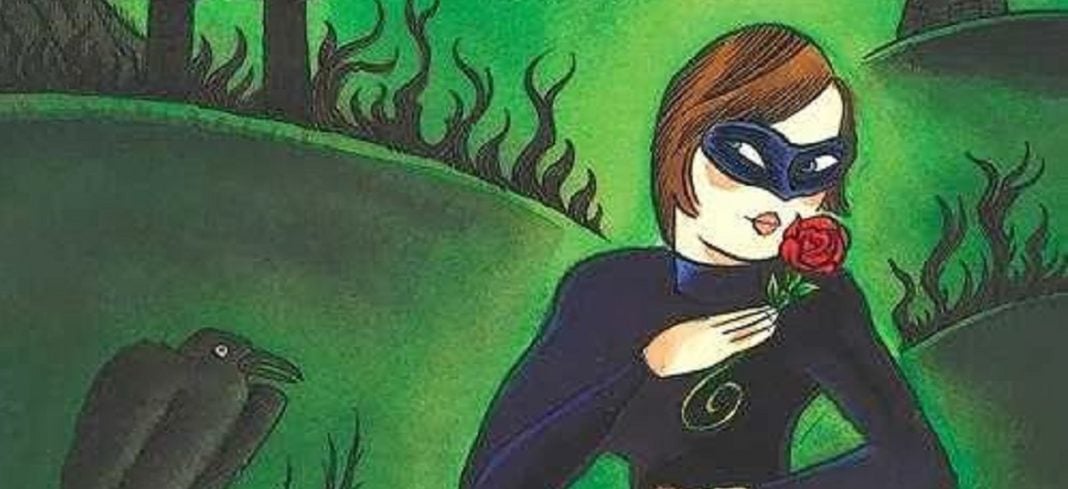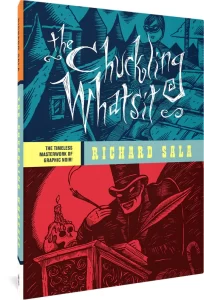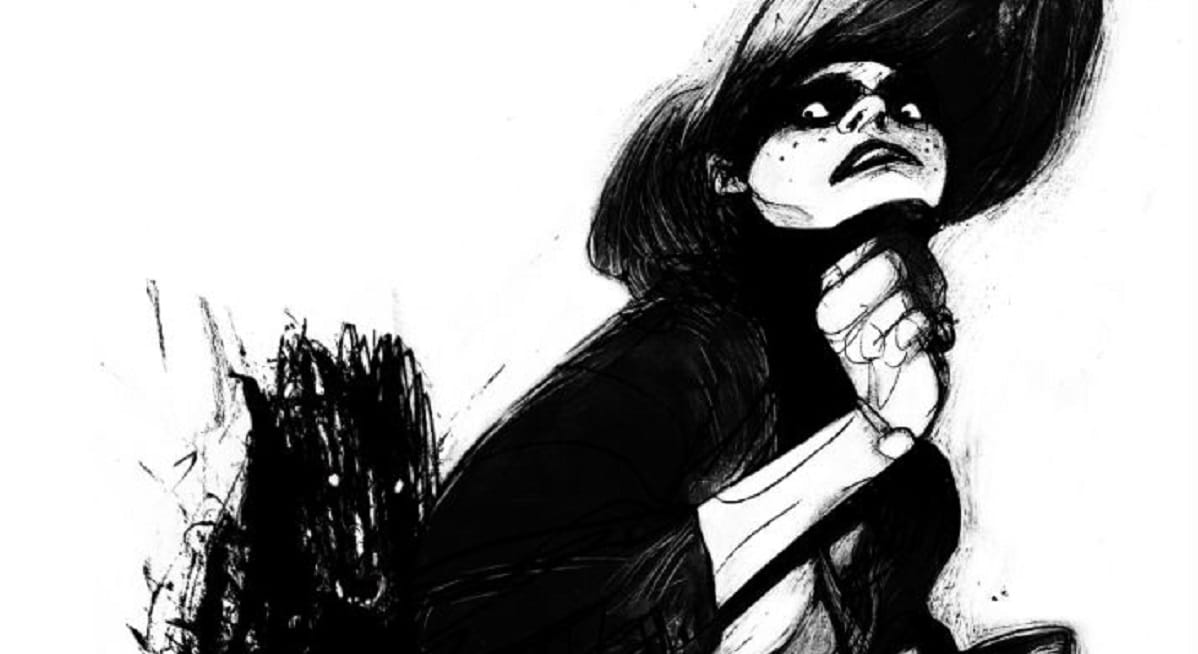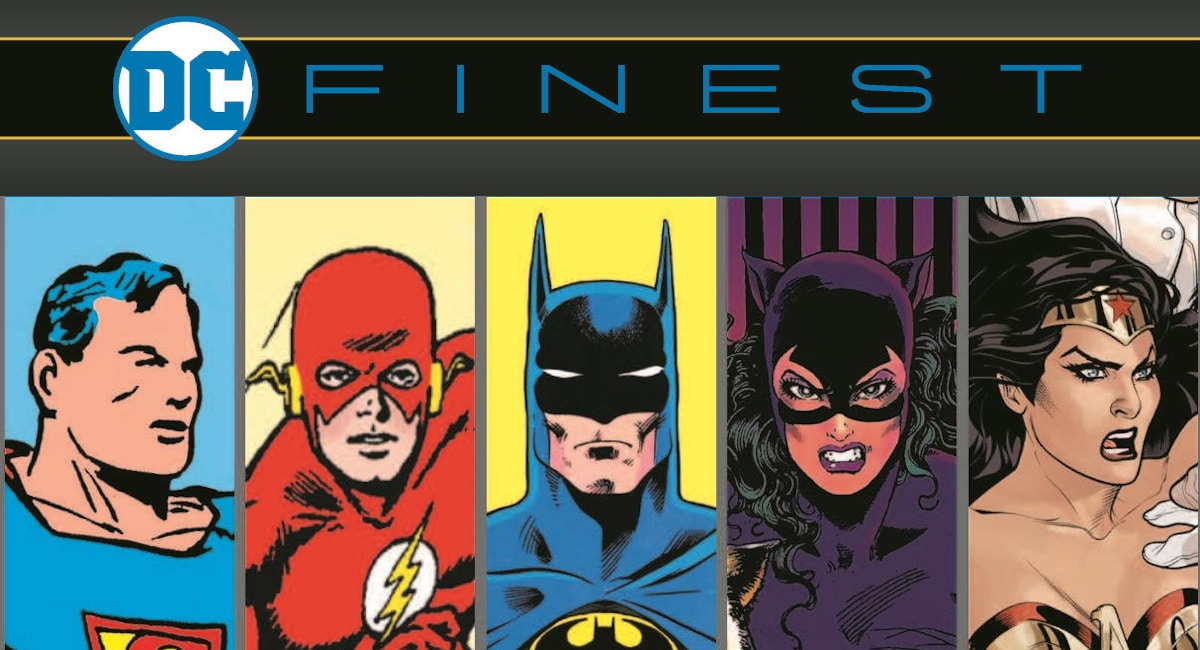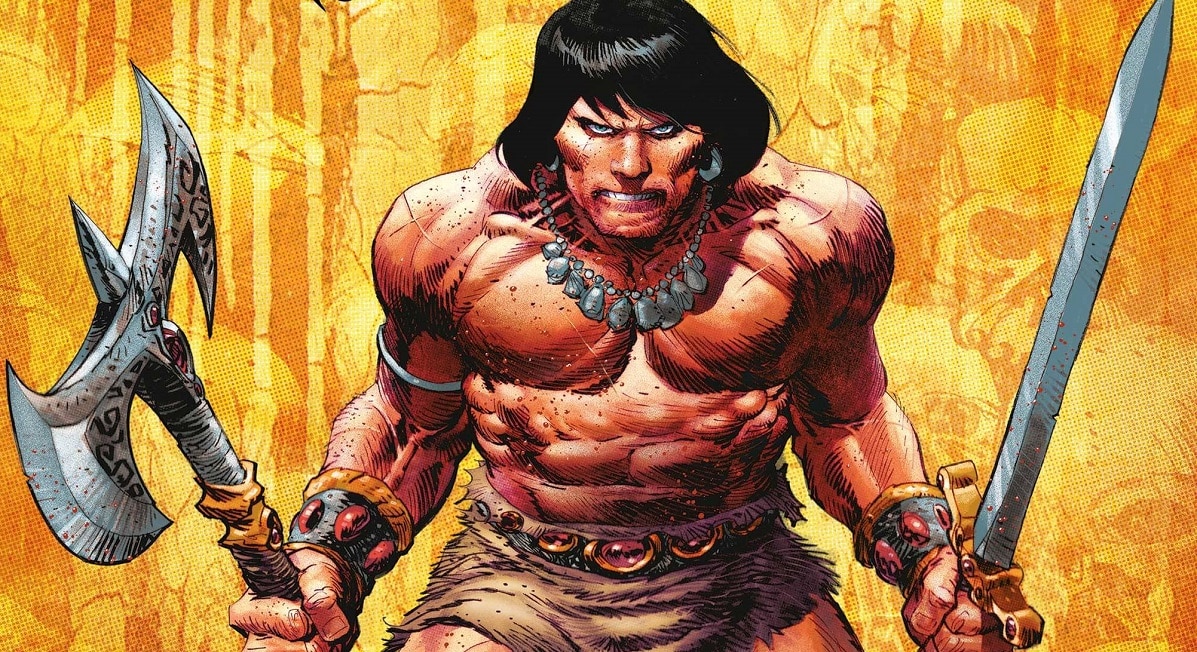 The Chuckling Whatsit
The Chuckling Whatsit
Writer/Artist: Richard Sala
Publisher: Fantagraphics
Originally Published: 1997
New Hardcover Edition: January 2023
The Chuckling Whatsit by Richard Sala — for the uninitiated — is a comics classic. It is an idiosyncratic and deeply weird murder mystery of a book, one that is very much a brilliant cartoonist’s singular vision. In fact, when Sala passed away in 2020 not long after the start of the pandemic, the book was among the many reasons The Beat praised him as one of our favorite horror cartoonists, a staple of the site whose work we regularly wrote about around Halloween. A master of noir and thrillers, Sala created a body of work stands as a true achievement.
The Chuckling Whatsit — first published in 1997 — had been out of print for some time. This month, however, it not only returned with a full printing, but it also received its first-ever hardcover edition, out now via publisher Fantagraphics. While perhaps not Sala’s most readily accessible work — that honor should probably go to the Snow White-skewing, Delphine — this new edition is a welcome reminder that the The Chuckling Whatsit is a timeless and towering achievement of both the spooky thriller genre and of the graphic fiction medium.
With the new hardcover edition in hand, I revisited The Chuckling Whatsit to start the year. I was struck chiefly with just how singular the book feels, even for those who have read Sala’s other work. It’s a scene-driven story in which a collection of fascinating and superbly-designed weirdoes — all of whom are some sort of unsavory — bounce off of each other as death lurks in the margins. The narrative feels loose and chaotic until the barn-burning last sequence. There’s an almost non-linear approach to story here, a total disinterest in audience hand-holding as it pertains to the characters and their various agendas, which are almost to a one as surprising as they are complex. What guides the story instead is a sense that something sinister could be anywhere at any time in this world among these outsiders. This all imbues The Chuckling Whatsit with an eerie and propulsive sense of tension, making for a rapid and jarring read right on through to the books final pages.
The element that stood out most to me upon a second examination was Sala’s use of astrology. To me, astrology can feel like a game of chicken with the coincidental (your mileage may vary, of course). Inherently, one never knows if the practice is entirely incidental, a game driven by the shared experiences that people have by being born in a given month, and that’s part of what’s at work in the story. How much should the principal characters believe about anything? How much is just coincidence? Should those involved just prostrate themselves at the alter of the unknown as they are carried to their fates? Plus also, what’s with the secret society and the masked assassin on the rooftops and the spooky-as-all-hell little dolls?
There’s a lot in The Chuckling Whatsit, all of which is interesting, to be sure. But the astrology motif is the one that sort of transcends the other touches, even as it’s used throughout the book with restraint, which I think is the right move. The last thing a plot that depends on ambiguity needs is all of its characters introducing themselves like, ‘Hi, I’m a Virgo, let’s talk about what that means.’ The other choice that really works for the book and its interest in astrology is that the protagonist, Broom, is a reluctant — if not outright disinterested — astrologer. He’s the one we have guiding us through this world and this mystery, and he doesn’t want to be any part of it, not really. He doesn’t like his job, he’s not especially concerned with the victims, and — as we find out later — if not for the machinations of others in the shadows, he probably would have been killed immediately, several different times and in a few different ways. That choice too is wonderfully not belabored.
Illustrated with Sala’s black and white pen work, The Chuckling Whatsit in the end is a story of a hapless investigator getting mired in a mystery that feels endless, and, true to form, the book doesn’t give us every last answer when it reaches its conclusion. It’s more a journey of the atmospheric, a narrative tight-rope walk where you’re almost rooting for the walker to fall just to see what total catastrophe might look like. I absolutely love it.
My other interest during this read-through was the physical book itself, and I am delighted to report that the new edition is gorgeous. Jacob Covey and Daniel Clowes are credited with the book’s design, which is essentially perfect, from the jarring color contrast on the front cover to the WHO WHAT WHERE WHY concept on the back, above a Sala femme fatale having a drink with a disembodied skeleton (just perfect stuff). The book also features a run through of the cast at the very end, which will remind readers of just how bonkers and varied the people in The Chuckling Whatsit truly are, sort of re-emphasizing how special this book is as it closes. Finally, the book jacket has a long and respectful rundown of Sala’s life and career, which is a very nice inclusion.
It all adds up to a new hardcover that’s a worthy edition to any shelf; if you’re looking for a single Sala work to add to your collection of graphic fiction, this might be the one.


